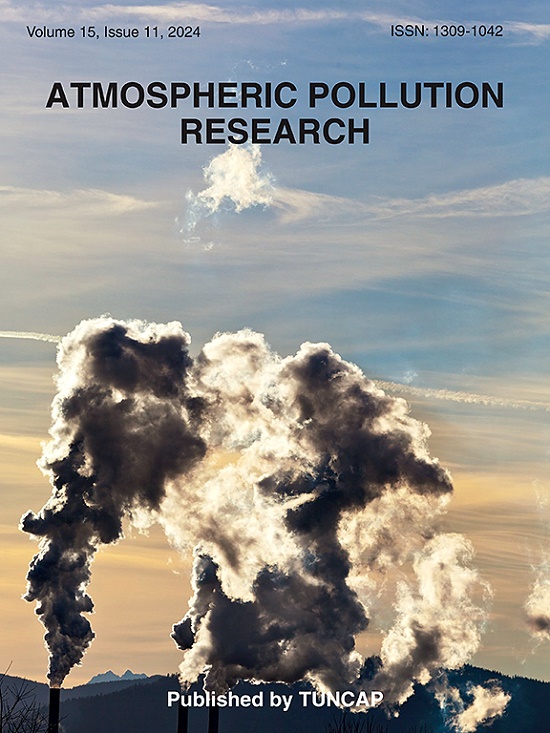Long term (2011–2023) analysis of traffic and biomass burning contributions to black carbon in the third largest metropolitan area of Spain
IF 3.9
3区 环境科学与生态学
Q2 ENVIRONMENTAL SCIENCES
引用次数: 0
Abstract
This work is focused on the temporal characterization of equivalent Black Carbon (eBC) mass concentrations and their sources in a suburban station notably impacted by traffic, located in the metropolitan area of Valencia, Spain (western Mediterranean Sea). The average ( standard deviation) concentrations of fossil fuel (eBCff) and biomass burning (eBCbb) contributions were 0.9 and 0.06 , respectively. These values represent the anthropogenic character of local aerosols. Both contributions also show a very marked seasonality: higher values in winter and lower in summer, corresponding to the strong dependence of the atmospheric conditions. The eBCff concentrations exhibit a daily pattern consistent with the evolution of traffic: a morning peak (around 8 LT) and other in the evening (around 19 LT). The seasonal Mann–Kendall test was applied to identify long-term trends and the Sen slope estimation to quantify the annual variation. Decreasing trends were found for eBCff concentrations ( /yr), showing the effectiveness of air quality regulations. Less noticeable trends were found for eBCbb concentrations. This fact evidences the contribution of biomass burning is not only related to changes in anthropogenic emissions, but also to natural phenomena, making it more difficult to interpret long-term trends.
西班牙第三大城市交通和生物质燃烧对黑碳贡献的长期(2011-2023)分析
本研究的重点是西班牙瓦伦西亚大都市区(地中海西部)一个受交通影响明显的郊区车站的等效黑碳(eBC)质量浓度及其来源的时间特征。化石燃料(eBCff)和生物质燃烧(eBCbb)贡献的平均(±标准差)浓度分别为0.9±0.5 μgm - 3和0.06±0.05 μgm - 3。这些数值代表了当地气溶胶的人为特征。两者的贡献也表现出非常明显的季节性:冬季高,夏季低,对应于对大气条件的强烈依赖。eBCff浓度表现出与交通演变一致的日模式:早晨高峰(约8lt),其他高峰在晚上(约19lt)。采用季节性Mann-Kendall检验确定长期趋势,采用Sen斜率估计量化年变化。eBCff浓度呈下降趋势(- 0.023 μgm - 3/yr),表明空气质量法规的有效性。eBCbb浓度的变化趋势不太明显。这一事实证明,生物质燃烧的贡献不仅与人为排放的变化有关,而且与自然现象有关,这使得解释长期趋势变得更加困难。
本文章由计算机程序翻译,如有差异,请以英文原文为准。
求助全文
约1分钟内获得全文
求助全文
来源期刊

Atmospheric Pollution Research
ENVIRONMENTAL SCIENCES-
CiteScore
8.30
自引率
6.70%
发文量
256
审稿时长
36 days
期刊介绍:
Atmospheric Pollution Research (APR) is an international journal designed for the publication of articles on air pollution. Papers should present novel experimental results, theory and modeling of air pollution on local, regional, or global scales. Areas covered are research on inorganic, organic, and persistent organic air pollutants, air quality monitoring, air quality management, atmospheric dispersion and transport, air-surface (soil, water, and vegetation) exchange of pollutants, dry and wet deposition, indoor air quality, exposure assessment, health effects, satellite measurements, natural emissions, atmospheric chemistry, greenhouse gases, and effects on climate change.
 求助内容:
求助内容: 应助结果提醒方式:
应助结果提醒方式:


